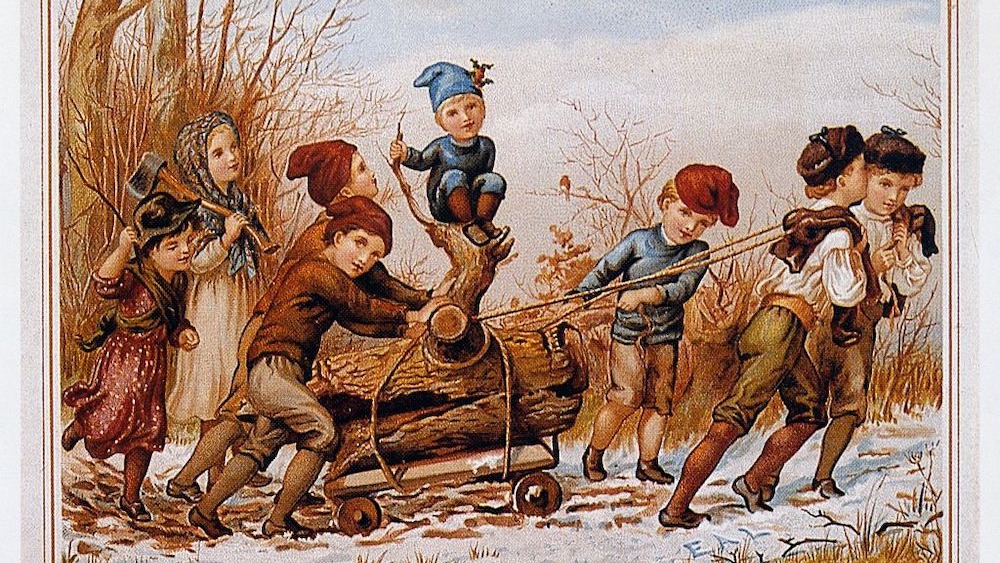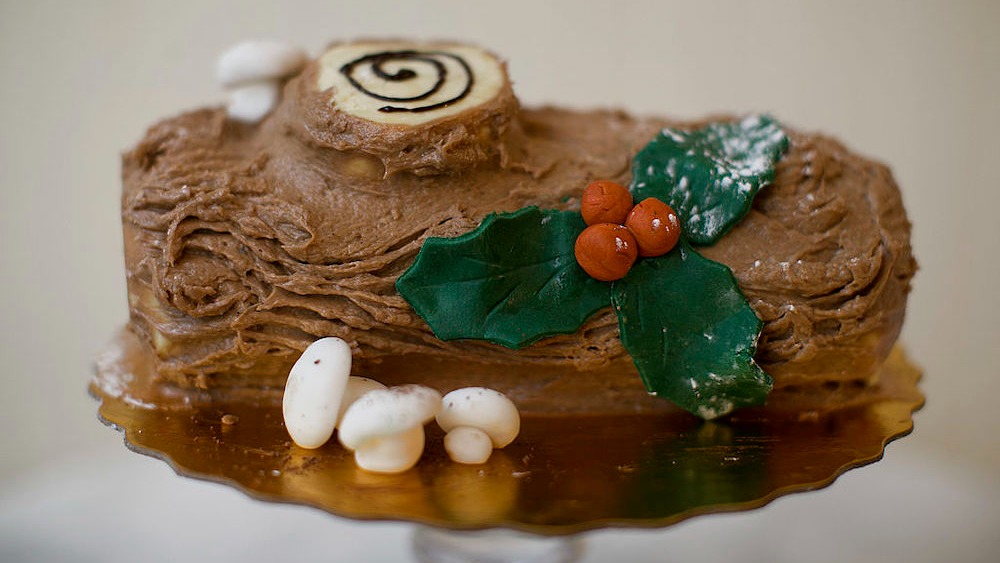What is a Christmas Yule log?
A Yule log is a Christmas tradition in which a log of wood is progressively burned in a fireplace over several nights.

A Yule log is a Christmas tradition in which a log of wood is progressively burned in a fireplace over several nights.
The tradition was once popular in parts of Europe and made its way to North America, but it's now part of the more general tradition of having a log fire at Christmas.
According to Linda Watts, a historian at the University of Washington Bothell, the Yule log tradition may have once been a pagan custom representing "divine light" during the Germanic midwinter festival of Yule, which predates Christianity.
It's not clear what Yule originally meant, but the original Germanic words — "geol" in Old English and "jol" in Old Norse — may refer to the midwinter months. After the Germanic lands converted to Christianity from the early Middle Ages, however, "Yule" became a word for Christmastime.
Watts noted that several Yule traditions, perhaps the Yule log among them, have become known as Christmas traditions.
Related: Who is Krampus, and what does he have to do with Christmas?
In the oldest form of the Yule log tradition, the end of a wooden log was thrust into a fire, where it burned for one night while the rest of the unburned log lay outside the flames. Some Yule logs were very large, and illustrations from Tudor times in England (roughly the 16th century) show several men hauling the logs into the fireplace of a stately house. But in other cases, the log was somewhat smaller and could be stored "for luck" beneath a bed between bouts in the fire, supposedly as protection against lightning and — somewhat ironically — fire, Watts wrote in the "Encyclopedia of American Folklore" (Facts on File, 2007).
Sign up for the Live Science daily newsletter now
Get the world’s most fascinating discoveries delivered straight to your inbox.
More of the unburned log was then moved into the fire as it was consumed each night, until the "12 days of Christmas" had passed, on Jan. 6. (According to the Catholic Encyclopedia, the 12 days of Christmas may represent the 12 days before the baby Jesus was seen by the Magi, also known as the Three Wise Men or Three Magic Kings.)
Anything left from the Yule log would be burned in the days that followed, as a way of establishing continuity.
According to Watts, the Yule log tradition traveled to North America with European settlers, and for a time the burning of a Yule log was one of the traditions of an American Christmas.
There are stories that slaves in the American South might be given days off from their labors at Christmastime while a Yule log burned at the "Big House." According to a 1998 study in the Journal of the Early Republic by the Purdue University historians Shauna Bigham and Robert E. May, some reports claimed that slaves made merry "until the Yule log burned, which sometimes took over a week."
But the authors note this was not usual, and that many slaves were expected to work over Christmas; others were threatened that their "bad behavior" would lead to them losing their few days off at Christmas.

In France, where the Yule log tradition was once widespread and known as bûche de Noël (French for "Christmas log"), the log has been replaced with the tradition of a cake that's iced to look like a log of wood, also known as a bûche de Noël.
National Geographic reports that there's evidence for Yule log cakes from the 1600s. But the fact that they are usually made with rolled sponge cake suggests the cake tradition became popular when sponge cakes originated in the 19th century, after baking powder was commercialized.
The Yule log tradition now seems to have become part of the general tradition of building a log fire at Christmas, but Watts told Live Science in an email that virtual Yule log fires are now common.
A New York television station, WPIX, first aired a Yule log broadcast at Christmastime in 1966, showing a log burning in the fireplace of Gracie Mansion, the official residence of the mayor of New York City.
"The sight of Gracie Mansion's hearth, filmed in color, was accompanied by Christmas music," Watts said. "I remember this program from my childhood, which I spent in the New York area."
She notes that there have been many copies of the WPIX Yule log broadcast (the first run ended in 1989; but it was revived in 2001, and still runs today), and the Yule log tradition now lives on as internet video showing crackling logs, often set to Christmas music.
Tom Metcalfe is a freelance journalist and regular Live Science contributor who is based in London in the United Kingdom. Tom writes mainly about science, space, archaeology, the Earth and the oceans. He has also written for the BBC, NBC News, National Geographic, Scientific American, Air & Space, and many others.









